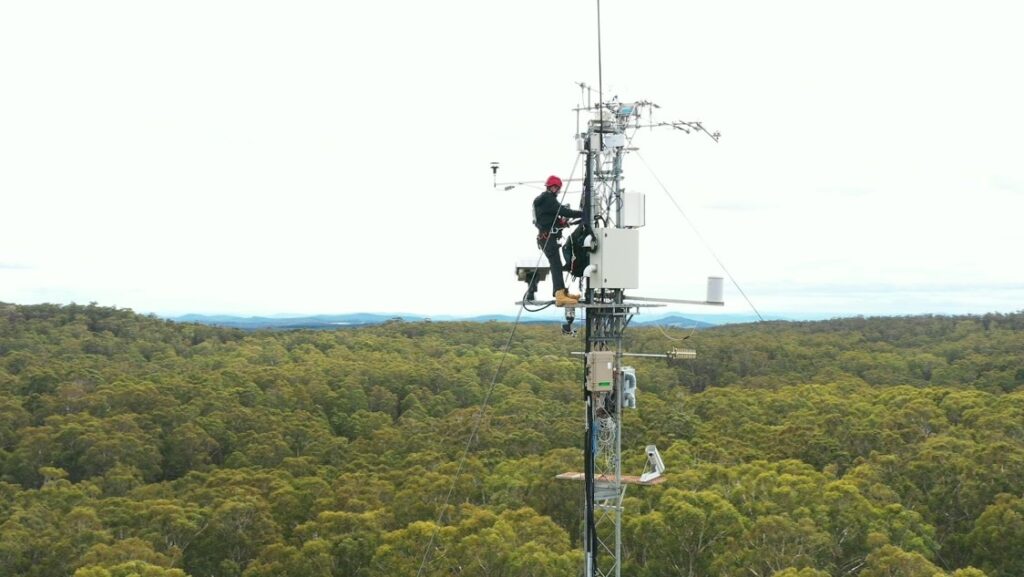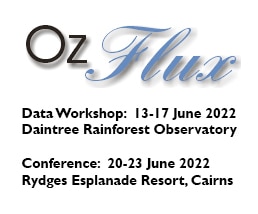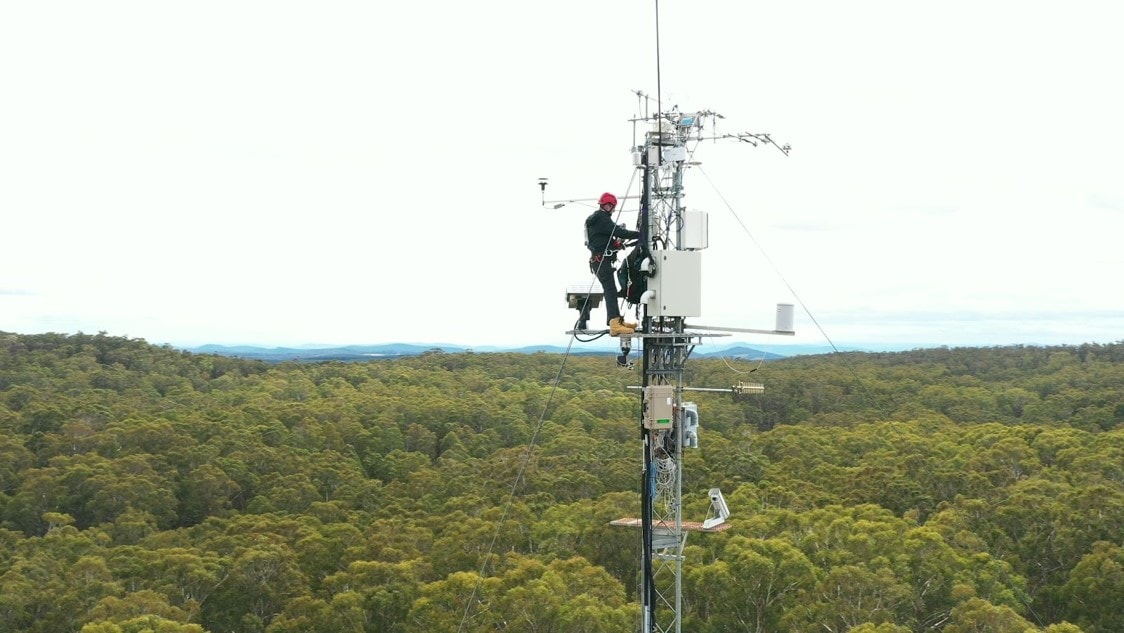An Australian-New Zealand network of flux monitoring stations has been running for 21 years. A major paper reviewing its data found that global warming will periodically reduce the capacity of ecosystems to take carbon from the atmosphere.

If healthy, the Earth’s land ecosystems could store up to 29 % of our ongoing carbon emissions. Such ecosystems could be an important part of carbon-sequestration strategies. Biological carbon-sequestration means growing plants remove carbon dioxide from the air, locking it away in their tissues. Since carbon dioxide is a key greenhouse gas, any carbon removed this way slightly reduces global warming.
Assessing the feasibility of ecological carbon sequestration for mitigating climate change needs long-term process-monitoring data. Fortunately, the OzFlux research network’s mission started such monitoring in 1991, in anticipation of the present need.
What is OzFlux?
OzFlux is the community of researchers who operate a network of ground-based ecosystem monitoring stations across Australia and New Zealand. The network consists of instrument towers that measure the energy, water and gas exchange – the flux – between the atmosphere and the ecosystem. In addition, the towers are weather stations, measuring air temperature, humidity and solar radiation. Measuring the flux reveals the workings of ecosystem processes.
A group of twelve Australian and New Zealand universities, plus CSIRO and the Manaaki Whenua Landcare Research institute, manages a total of 28 active and 15 inactive OzFlux stations.
TERN, Australia’s NCRIS-enabled Terrestrial Ecosystem Research Network, funds and supports OzFlux. OzFlux is also a very important southern hemisphere link in a similar global ecosystem monitoring network called FLUXNET, consisting of over 1000 monitoring stations.
OzFlux’s 20+ year data series is now yielding answers to key ecological questions. This includes whether ecosystem sequestration is feasible. Professor Jason Beringer and Research Fellow Dr Caitlin Moore, both from the University of Western Australia’s School of Agriculture and Environment, led a large team of researchers contributing to a major paper, published in Global Change Biology in March 2022.
Is ecosystem sequestration feasible?
One of the team’s key finding is that during times of ecological stress, specifically droughts and heatwaves, forests stop absorbing carbon dioxide and instead start emitting it. The reason is that such weather events kill plants, and as it decays a dead or dying plant releases the carbon it stored over its lifetime. The released carbon returns to the atmosphere where it contributes to global warming.
Nevertheless, once the stressful period ends and weather conditions return to normal, forests recover. As plants start growing again, so the forest also resumes storing carbon.
“Australia and New Zealand’s ecosystems can be amazingly resilient to bushfire, drought, cyclones and the like. That resilience can enable them to return to their role as carbon sinks as they recover from those impacts.”
Dr Jamie Cleverley, TERN Ecosystem Processes Deputy Lead and Acting Director, OzFlux
The problem is that although Australian ecosystems are generally adapted to and tolerant of drought and heatwave conditions, global warming makes such extreme weather events more severe and more frequent. Australia has already warmed by 1.44 oC since national records began in 1910. This has caused an extended unnaturally dry period across the southern part of the continent. This trend looks set to worsen as climate change becomes more severe and Australia warms still further.
Therefore, a key finding of the OzFlux network’s study is that Australian forests will become carbon emitters more frequently and for longer, while the periods of absorption will be fewer and shorter, compared to pre-industrial times.
“This review supports the importance of reducing human-related carbon emissions significantly, and soon. Any progress we can make there will help our ecosystems maintain their protective role.”
Dr Jamie Cleverly, co-author, James Cook University
The team’s paper details several other findings. These are summarised as eight lessons learned to date about ecosystem-change biology, about farm ecosystems often being significant carbon producers, and about the synergy of flux studies with remote sensing and modelling disciplines.

Ongoing roles for flux monitoring
Even assuming an ideal case of drastic, near-immediate reductions to global carbon emissions, climate change will continue worsening for perhaps 200 years before it improves. The only way for humankind to remain informed about changes to the role of ecosystems in mitigating climate change is if ecosystem monitoring networks keep operating for that whole time.
“This review shows the importance of ecosystem observatories like TERN and the OzFlux research network, which provide the data to inform the science and modelling,” said paper co-author Associate Professor Michael Liddell, also of James Cook University. “These data underpin land management strategies that protect our natural resources from deteriorating to the point where they cannot support vital ecosystem services.” Apart from sequestering carbon, such services also include environmental cooling during heatwaves and capturing runoff during unusually wet periods.
If the ability of natural ecosystems to provide such services deteriorates, this will dramatically exacerbate global warming plus many other environmental problems. That would force us to set even stricter emissions-reduction targets.
Today’s researchers are indebted to the vision of OzFlux’s founders and the later establishment of the TERN ecosystem research infrastructure. The data from the network of Australian and New Zealand flux stations already allows us to review 21 years of changing ecological processes in detail. Future researchers and land managers will be similarly indebted to those who join the OzFlux research network and operate TERN far into the future. Long-term studies may not pay off immediately, but the benefits are substantial when they do.








